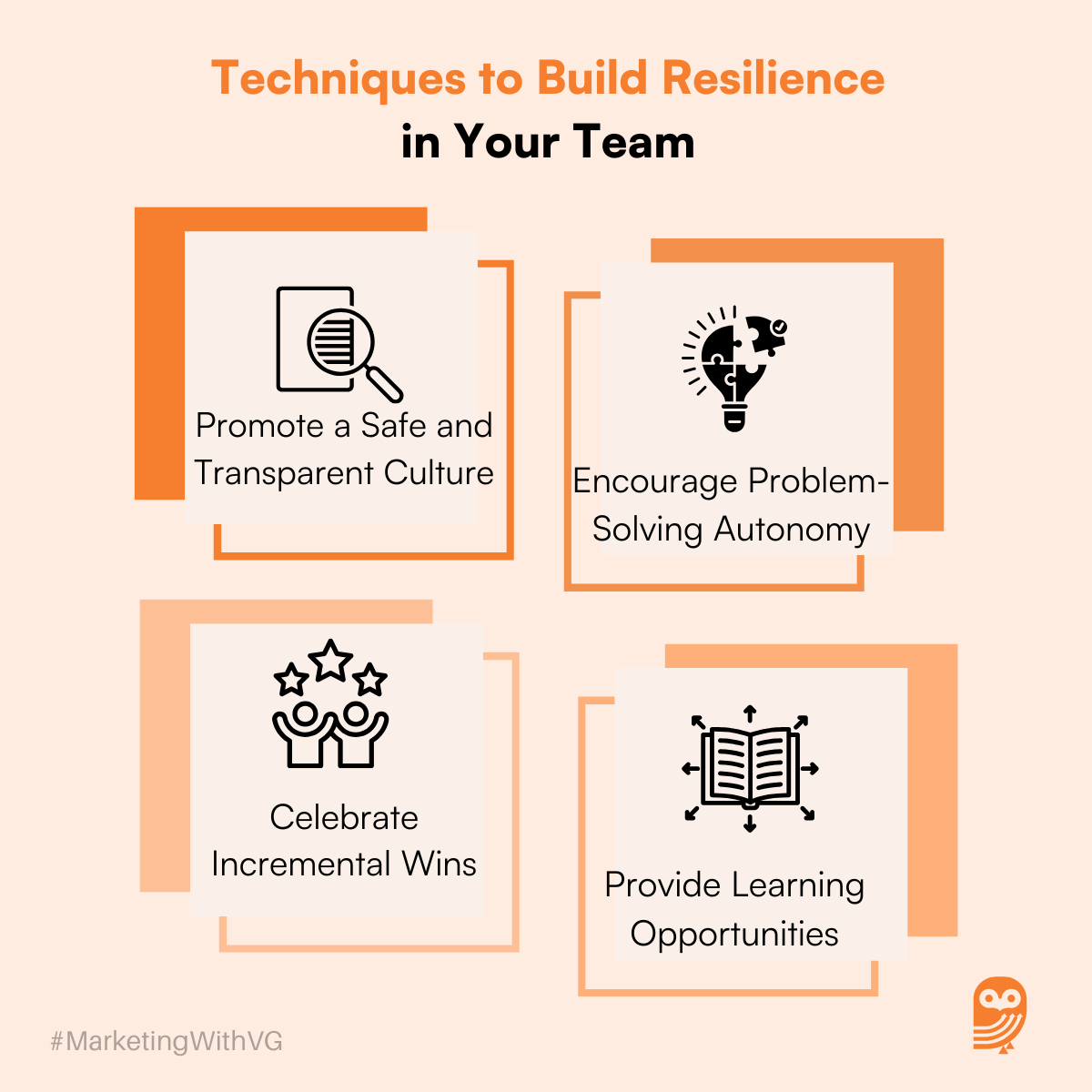Why Resilience is Essential for Leaders
Navigating Uncertainty with Confidence
Unpredictable challenges can paralyze teams, but resilient leaders provide a steady hand, ensuring progress even when conditions are chaotic.
Example: Imagine a project manager facing a sudden budget cut midway through a critical initiative. Instead of halting the project, they reallocate resources, identify priority deliverables, and maintain open communication with stakeholders to manage expectations. Their adaptability keeps the project alive and instills confidence in their team.
Inspiring Teams Through Tough Times
Leaders who model resilience teach their teams that setbacks are temporary and surmountable.
Example: A startup founder finds that their product prototype fails user testing. Instead of scrapping the idea, they involve the team in reworking the product, celebrating small milestones to boost morale and show that setbacks are learning opportunities.
Driving Long-Term Success
Organizations led by resilient leaders are more innovative and prepared for the future. Resilience fosters a culture where challenges are seen as opportunities for creative problem-solving.
Resilience in Action: Hypothetical Scenarios
Scenario 1: Crisis Communication
A CEO learns of a significant product defect that could harm the company’s reputation. Instead of avoiding the issue, they hold a transparent press conference, acknowledging the mistake, outlining the corrective measures, and reinforcing their commitment to quality. Internally, they motivate the team by emphasizing lessons learned and the opportunity to improve processes.
Scenario 2: Team Conflict
A team leader faces escalating tension between two top performers, threatening team dynamics. They address the situation by holding one-on-one conversations, mediating a resolution, and introducing team-building activities to rebuild trust. Their proactive and empathetic approach ensures that the conflict becomes an opportunity for strengthening team collaboration.

Scenario 3: Economic Downturn
A business owner faces a downturn that necessitates difficult decisions, such as reducing costs. Instead of resorting to widespread layoffs, they explore creative solutions like temporary pay cuts, cross-training employees for multiple roles, and pursuing new revenue streams. They maintain transparency with their team, earning loyalty and demonstrating resilience.
How to Build Personal Resilience as a Leader
Reframe Challenges as Opportunities
Cultivate the habit of viewing setbacks as problems to solve rather than insurmountable barriers.
Takeaway: Use reflective questions like What can I learn from this? or How can this improve our process?
Foster Emotional Agility
Embrace emotions without letting them dictate your actions. Practicing mindfulness or journaling can help you regulate stress and maintain clarity during tough decisions.
Takeaway: Create a “pause moment” to assess situations before reacting.
Build a Resilient Network
Surround yourself with trusted advisors, mentors, and peers who can offer perspective and guidance during challenging times.
Takeaway: Regularly invest in your professional relationships by sharing your experiences and learning from others.
Develop a Long-Term Vision
Focus on your broader mission to stay motivated, even when short-term challenges seem overwhelming.
Takeaway: Write down your long-term goals and revisit them when facing setbacks.
Invest in Physical and Mental Health
Prioritize well-being by exercising, eating healthy, and engaging in activities that rejuvenate your mind.
Takeaway: Set a non-negotiable daily habit, like a 10-minute mindfulness exercise or a quick walk.
Techniques to Build Resilience in Your Team
Promote a Safe and Transparent Culture
Encourage your team to voice concerns without fear of blame. When they see resilience modeled by their leader, they are more likely to mirror it.
Example: A team member misses a critical deadline. Instead of assigning blame, analyze the reasons behind the delay, identify gaps, and collectively brainstorm solutions for future projects.
Encourage Problem-Solving Autonomy
Empower teams to propose solutions rather than wait for instructions during setbacks.
Example: During a software launch delay, a resilient leader asks team members to suggest alternative roll-out plans. This ownership fosters creativity and resilience in the team.
Celebrate Incremental Wins
Recognize and reward small achievements, especially during challenging times.
Example: During a long project, celebrate milestones such as the successful completion of phases or overcoming specific obstacles. These celebrations reinforce the team’s belief in eventual success.
Provide Learning Opportunities
Equip your team with the skills to adapt to changing circumstances by offering training or cross-functional projects.
Takeaway: Introduce quarterly “learning hours” where team members can explore skills outside their immediate roles.
Pitfalls to Avoid While Practicing Resilience
Ignoring the Emotional Toll on Yourself or Your Team
Resilience doesn’t mean brushing off emotions—it’s about processing them constructively.
Avoidance Tip: Regularly check in with yourself and your team on their mental health and stress levels.
Overcommitting to a Single Solution
Adaptability is key. Clinging to one approach can hinder progress when conditions change.
Avoidance Tip: Encourage brainstorming multiple solutions and assess each objectively.
Neglecting Long-Term Impact for Short-Term Wins
Quick fixes that compromise long-term goals can erode trust and stability.
Avoidance Tip: Weigh short-term and long-term consequences for every decision.
Resilience: A Skill Every Leader Can Build
Resilience isn’t an innate talent—it’s a skill developed through practice, reflection, and persistence. By embracing adversity, resilient leaders set themselves and their teams up for greater success. From fostering a culture of adaptability to investing in personal growth, resilient leadership is a cornerstone of navigating the complexities of today’s business world.
Key Takeaways to Apply Today:
- 1.Reframe challenges as learning opportunities.
- 2. Cultivate emotional agility to stay calm under pressure.
- 3. Build strong networks of support within and outside your organization.
- 4. Promote problem-solving autonomy within your team.
- 5. Celebrate progress, no matter how small, to build morale.
- 6. Stay aligned with long-term goals while navigating short-term setbacks.
- 7. Prioritize self-care as a leader to model balance for your team.
Conclusion: Resilience as the Cornerstone of Leadership
Resilience is not just a quality—it’s a necessity for effective leadership. In a world filled with unpredictability, challenges, and rapid change, resilient leaders rise above the noise, inspiring confidence and driving progress. They demonstrate that setbacks are not endpoints but opportunities to innovate, learn, and grow.
To build resilience, leaders must focus on reframing challenges, managing emotions, fostering supportive networks, and prioritizing both personal and team well-being. Resilient leaders also cultivate this mindset within their teams by creating a safe, adaptive, and growth-oriented environment.
The journey to becoming a resilient leader is not without effort, but the rewards—enhanced trust, stronger teams, and long-term success—make it indispensable. By embedding resilience into your leadership approach, you can not only navigate adversity with confidence but also transform challenges into stepping stones for greater achievements.
✅ “Discover the Leader’s Edge — Your Guide to Building Strong, Impactful Leadership”



